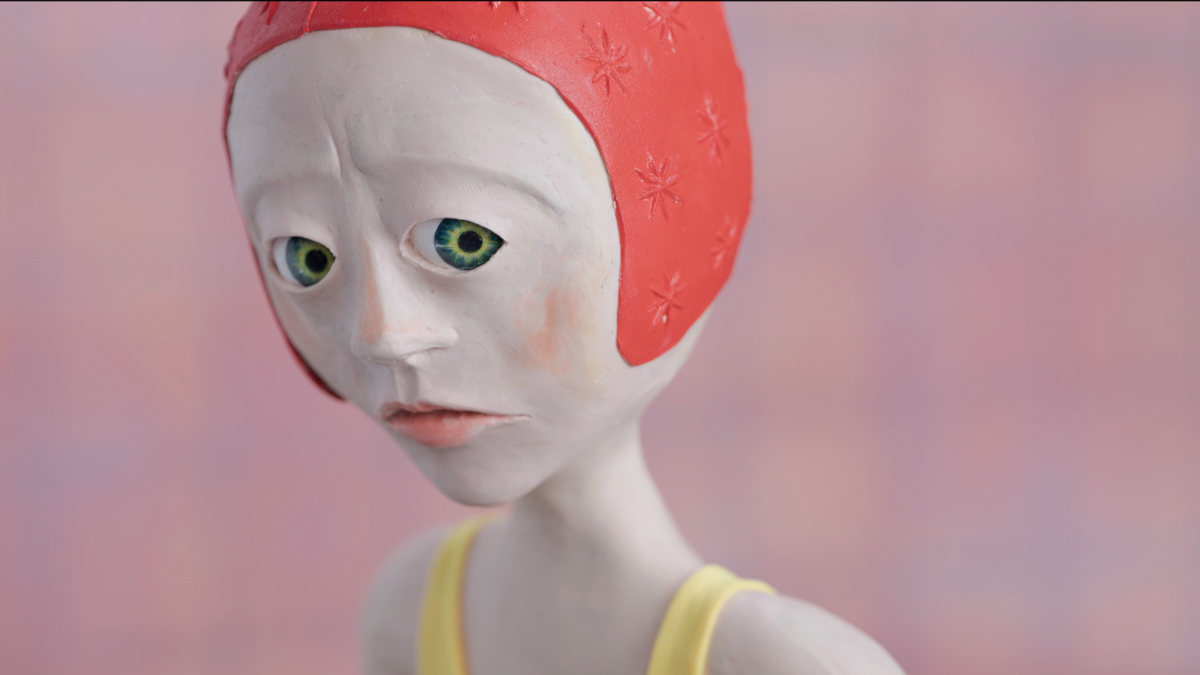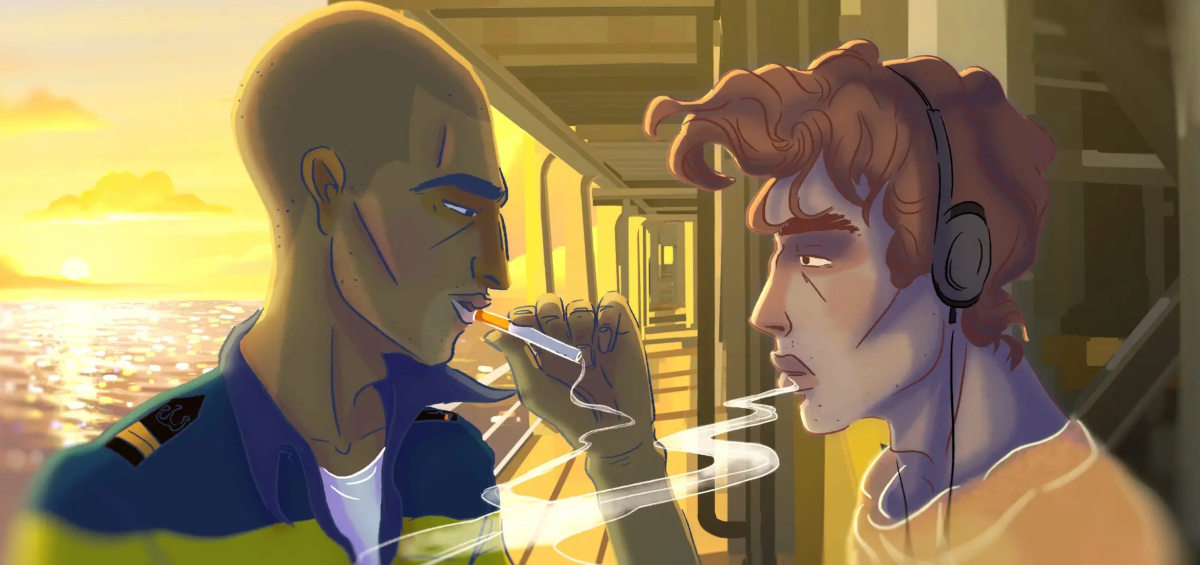'Under a Shooting Contrail' by Rika Nakayama
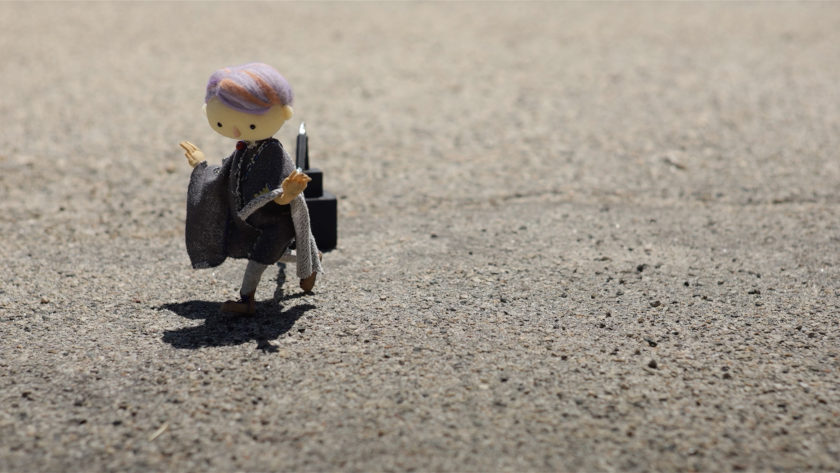
It's always nice to be outside. Emerging animation director and artist Rika Nakayama made a stop-motion puppet film during her CalArts studies, enticingly named 'Under a Shooting Contrail'. It has a single character, and perhaps one wish: to go outside its confines.
A little stop-motion puppet leaves the studio and explores the vast, dynamic, and unpredictable world of nature - Film Synopsis
She premiered her film online at Zippy Frames, and we learned more about the film in the process.
ZF: Did the idea of going out from the studio to the real world occur naturally to you? It looks like it reflects a director's own need to connect with the external world.
RN: I came up with the idea of outdoor puppet stop-motion in 2020 during my last year at Rhode Island School of Design. I took classes remotely from Japan (and in my apartment) during the COVID pandemic, living in a different time zone from my peers. As I learned more about how controlled stop-motion shooting is, I wanted to try something unconventional by bringing uncontrollable elements to it. I liked stories that break the fourth wall, so I often imagined a story of a stop-motion puppet leaving the stage or interacting with the animator. When I finally came to LA to start the MFA program at CalArts, I wanted to explore the new place, the sunny and bright LA, like the puppet in my film.
ZF: Did you have a lot of going back and forth with the script-writing process?
RN: I started with testing the outdoor stop-motion technique before developing a story. I needed to learn what is possible, what are the limitations, and what equipment I needed to animate a puppet outdoors. I made a mock-up puppet and did a lot of test animations, figuring out the rigging and how much the lighting changes in the environment. My goal for this film was to bring uncontrollability and serendipity to stop-motion animation, so it was more important for me to animate the puppet responding to locations than to follow storyboards.
After doing several tests and fabricating the final puppet, I made a simple storyline in which the puppet leaves the studio one morning and comes back the next morning with a little souvenir, bringing a memento from nature to his fabricated stop-motion set. Most outdoor shots were improvisational and straightforward, responding to wind, light, weather, and various spontaneous events at different locations. In the end, I gathered all the successful footage and edited them together to create the chronological sequence of a day.
ZF: Being this your first CalArts short, were you inspired by other people's work? From stop-motion masters to perhaps live-action directors?
RN: I watched Kirsten Lepore’s 'Bottle' before coming to CalArts, and encouraged me that location stop-motion is possible. I also watched Anu-Laura Tuttelberg’s 'Winter in the Rainforest', a big inspiration for me. Storywise, Yuri Norstein’s 'Hedgehog in the Fog' reminded me of the theme of serendipity in my film; we respond to unpredictable nature and events, and I cannot fight against nature. But if I observe and follow it, something magical happens on screen.
I also watched Wong Kar-wai’s 'Chungking Express' and Abbas Kiarostami's 'Taste of Cherry'. After watching Wong Kar-wai’s films, I tried a few long-exposure shots where the backgrounds were blurred, but it didn’t fit the tone of my film so I didn’t include these shots in the end. 'Taste of Cherry' became a memorable film for me; a few days after watching it, I got lost in the middle of a deserted mountain while driving with my puppets and equipment, and it was exactly like the landscape in this film. I could enjoy the experience and not feel too anxious by recalling this film.
ZF: How did you decide on your puppet's design, including hair color, armature, and clothing?
RN: I had a huge block of foam from Japan and CalArts had a fabric donation box, so I used these materials and wire armature to make the puppet and his clothes. Because he goes outdoors, I wanted to use durable materials for his shoes, so I bought real leather from a craft store and made his shoes. I made a few puppet prototypes to find a good body proportion and spent many days figuring out a good hair color for him. I wanted the puppet to have a good contrast and balance with the natural environment, not standing out too much nor blending in the environment too much, so I avoided using saturated colors or green colors. He is a traveler character created to act in a fabricated desert set, and he has the innocence and curiosity of a child to escape from the dark stop-motion studio and explore the outside world. So I gave him a cape with several colorful patches, a pink sculpey nose and toy eyes, and orange accents in his purple hair.

ZF: Did you use timelapse for the live-action shooting? And how was that combined with stop-motion?
RN: Most of the live-action parts are shot in timelapse. Since I animate the puppet outdoors, the environment changes faster than how we perceive nature, resulting in a time-lapse look around the puppet. So even for the shots where the puppet is not on the screen, I shot the sky and environment in timelapse on Dragonframe.
For the scenes where the puppet interacts with the environment, I usually shot a few frames first to see which direction the shadows or the moon were traveling and animated the puppet following the motion. I tried to shoot frames in close intervals in each scene to maintain the consistency of the timelapse environment, ranging from every 30 seconds to 2 minutes depending on the difficulty of the shot. If the puppet does not move much on screen, I would shoot every 30 seconds; if the puppet has an action, I shoot every 1-2 minutes because it takes more time to pose him. It was an intense process because I couldn't take a break in the middle of a shot; I often knelt to animate the puppet on the ground and had to travel back and forth between the puppet and the computer to shoot a frame.
ZF: What were your limitations regarding film duration, schedule, and budget?
RN: I pitched the idea in October and the film was finished in May. CalArts stop-motion facilities were still affected by the pandemic and we had limited access to shooting stages, which encouraged me to pursue the outdoor stop-motion idea. I spent the fall semester figuring out the concept of the film and testing animation, then I spent a month fabricating the puppet. I finalized the storyline in February and spent 4 months animating and editing.
The budget was very small because I only needed to make one puppet, a rig, and a simple set. The CalArts equipment office lent me all the necessary equipment (An equipment technician there purchased an adapter for me to attach external batteries to the camera so that I could shoot outdoors for many hours without a power source. I couldn’t have shot the outdoor scenes without his help).
Watch 'Under A Shooting Contrail'
ZF: What were the most difficult scenes to shoot? The night outdoor scenes or something else?
RN: The tree shadow chasing scene and rain scenes. The night scene was actually easier because I didn’t need to worry about the moving shadows as much as daytime. In the scene where the puppet chases a tree shadow on a wall, every frame is done in one take to keep the consistency of the timelapse. I never went back to fix the puppet’s pose. It is a wide shot of a shadow so I wanted to capture a seamless timelapse. It was the most labor-intensive scene, but once I finished it, it became one of my favorite shots in this film.
In the rain scenes, I had to protect the camera and the computer while animating the puppet in the rain. It was quite a sunny year in LA; once I saw a drizzle outside the window, I grabbed the puppet and equipment and went outside to shoot the rain scene. I didn’t know how long the rain would last, so I had to animate quickly. When the drizzle stopped and the sky became sunny, I made the puppet react to it. The wet sidewalk dried up very quickly on screen - a nice surprise to me. The rain scenes were full of improvisations.
ZF: Is this a story about appreciating our natural environment or a story about character independence from constraints?
RN: The puppet constantly carries his rig in this film, so although he’s outside of the controlled stop-motion environment, he still has constraints as a puppet. He cannot balance himself and his actions are limited by natural forces. But by bringing the puppet to the same environment as humans, it creates an interesting contrast of how a stop-motion puppet perceives the natural environment and interacts with it differently from humans.
One aspect of stop-motion I am fascinated by is that the puppet and the animator are in the same space but live at different speeds, perceiving different passages of time. While shooting this film, I found that nature is moving much faster than I thought – even when I shot a shadow or the stars every 5 seconds, I could see them moving between each frame. The sun, the moon, and shadows always looked static to me, but nature revealed its motions when I spent time looking at them with the puppet.
ZF: Stop-motion takes a long time. Do you still feel the same excitement now the film is ready and online? And what's next for you?
RN: It is always exciting for me to share this film with a new audience. After completing it, it has connected me with many filmmakers, artists, and stop-motion studios across the world. It has taken me to several film festivals where I could reunite with my undergraduate friends and instructors and meet new people. I’ve always brought the puppet with me to festivals and screenings; he has been my travel companion.
I am currently working on a new stop-motion project (a narrative film). I got enough sunlight making 'Under A Shooting Contrail', and now I’m back to the stop-motion cave spending time with new puppets. I’m hoping to complete this film and show it to the audience next year.
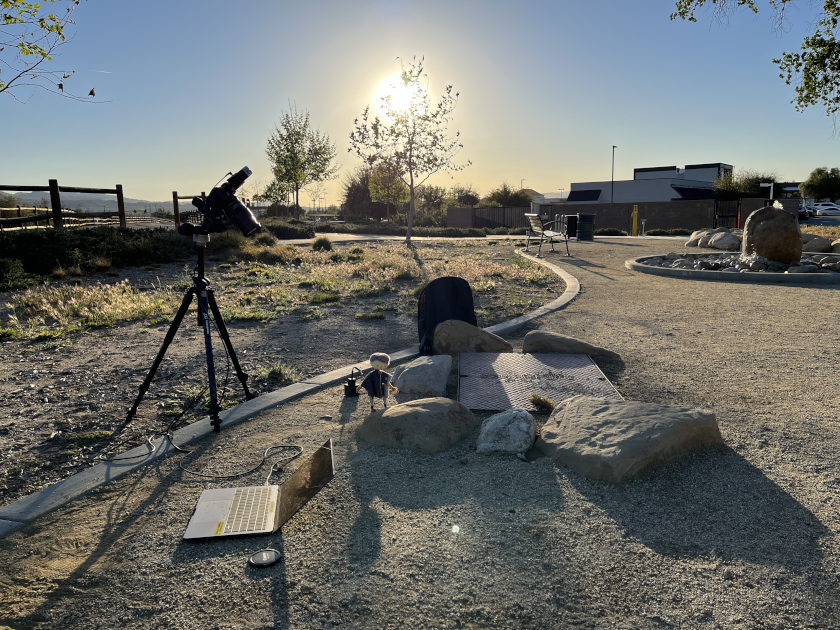
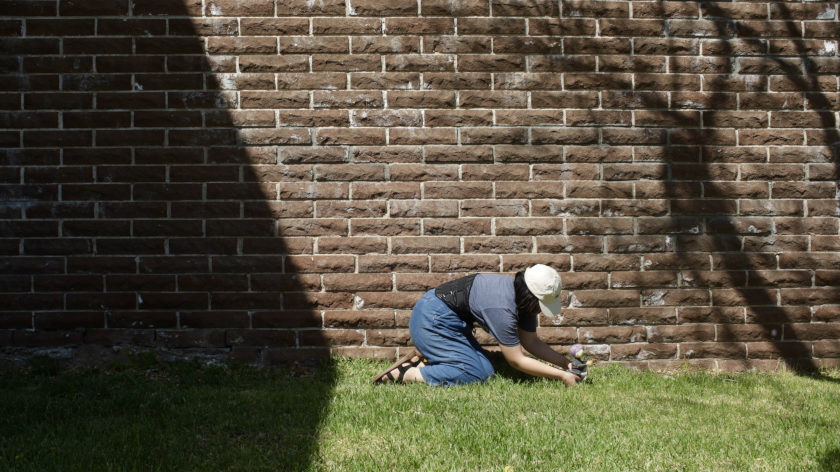
Behind the scenes of 'Under a Shooting Contrail'
About Rika Nakayama:
Rika Nakayama is an experimental and stop-motion filmmaker from Japan, currently based in Los Angeles. She holds a BFA in Illustration and Film/Animation/Video from the Rhode Island School of Design and recently graduated with an MFA in Experimental Animation from the California Institute of the Arts. Her animated works often draw inspiration from natural phenomena, memories, and sensory experiences, utilizing tactile materials.




